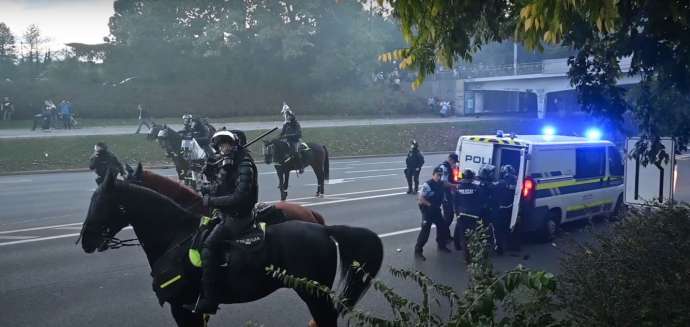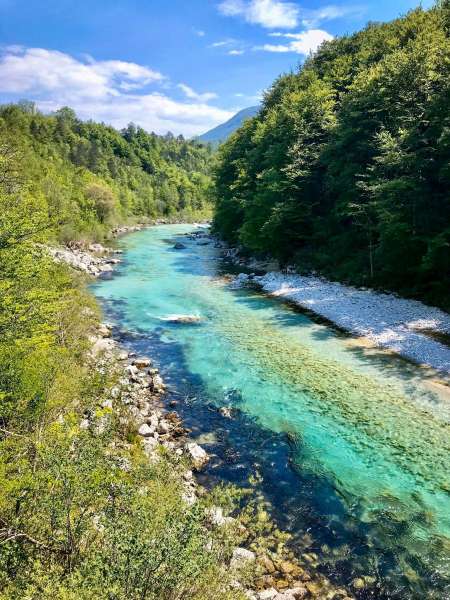STA, 18 October - Supervision at the General Police Administration carried out by the parliamentary Intelligence Oversight Commission (KNOVS) has confirmed the leadership of the Interior Ministry was present in two operational centres of the police during the 5 October protest, KNOVS chair Matjaž Nemec said on Monday, labelling it "rather unusual".
The supervision carried out by five KNOVS members has established that Minister Aleš Hojs, Interior Ministry State Secretary Franc Kangler, national security state secretary in the prime minister's office Žan Mahnič and Police Commissioner Anton Olaj visited the two operational centres during the protest.
While the presence of Olaj was justified, this cannot be said for the other three officials, Nemec told the press in Ljubljana on Monday, adding that in the past, ministers had usually visited operational centres after a campaign had been concluded.
Asked whether Božo Predalič, another state secretary at the Interior Ministry, was present in the centres, Nemec, the MP of the opposition Social Democrats (SD), said that Olaj did not want to answer this question.
Nemec said that the commission had not been able to determine whether some of the politicians present had been giving direct orders to the police how to handle the protest in Ljubljana, during which a water cannon and tear gas were used.
Olaj was not able to tell whether the situation in the operational centres was recorded, and said he would need to check this and report about it, he said.
According to Nemec, KNOVS did not get answers as to who gave orders to the police officers to use all means available against the protesters "at the moment when protests had not turned violent yet".
Minister Hojs said on Twitter last Friday that he was in Budapest on 5 October, and that he had arrived at Ljubljana airport only at 6:17pm. Nemec said the minister had arrived in one of the operational centres "in the early evening hours".
Hojs told the press today on the sidelines of a National Assembly plenary session that he had arrived at the operational centre around 7:15pm and that he had not been giving any instructions.
The minister said that he had come to the centre to congratulate everybody who had managed the campaign from the centre, and to ask about some details of the campaign, which had already been concluded by that time.
On Twitter, Hojs questioned Nemec's truthfulness, noting that he had told the public broadcaster that "the police ordered the use of a water cannon and tear gas already at 3:30pm", while according to the minister this happened a few minutes before 5pm.
Similarly, Mahnič said in a tweet that the supervision by KNOVS had rejected the "untruthful claims by the media and Nemec" that he and Hojs had been in the centre until around 6pm during the protest.
He said that he had arrived there only around 7:15pm, when the protest had largely been over, and that he had come there to get acquainted with the centre's work and the security situation, while giving no instructions.
KNOVS analysed today a total of eleven protests that took place in Ljubljana in recent months, including the conduct of the police during the 26 June protest in Prešeren Square, when members of the so-called Yellow Jackets far-right movement were forcefully removed.
Olaj, who had ordered internal supervision of the police conduct at the protest, met with the task force before and after the supervision, which he confirmed himself today, Nemec said.
"This sheds bad light in a way on the objectivity of the task force," he said, adding that what also caught the eye was Olaj admitting today that he "intervened in the work of supervisors, in the final report" at least in one case.
Nemec finds this unusual, as the police commissioner is supposed to provide conditions for independent work of the supervisory task force.
The KNOVS chair also noted that the police had used by far the most coercive means in its history at the 5 October protest.
Due to these and other reservations, the commission has asked the Office of the Human Rights Ombudsman to examine compliance of the police conduct at protests from the aspect of human rights, Nemec said.
Olaj said today that the police respected parliamentary oversight and KNOVS, which was why he had answered the questions he had received today although the topics covered had exceeded KNOVS's powers.
He said in a press release published on Twitter they were used to oversights and inquiries by the Human Rights Ombudsman and denied any interfering in the contents of the final reports after the protests.
Olaj told KNOVS that two commissions had been set up to check the decisions of police at the protests on 15 September and 5 October. He expects the first report, which will be presented to the public, in the first half of November.
Asked about visits to the operational centres on 5 October, Olaj said he had been at the Centre for Protection at 7:25pm and at the Ljubljana Police Administration at 7:35pm. He said nobody had given instruction to police officers.







